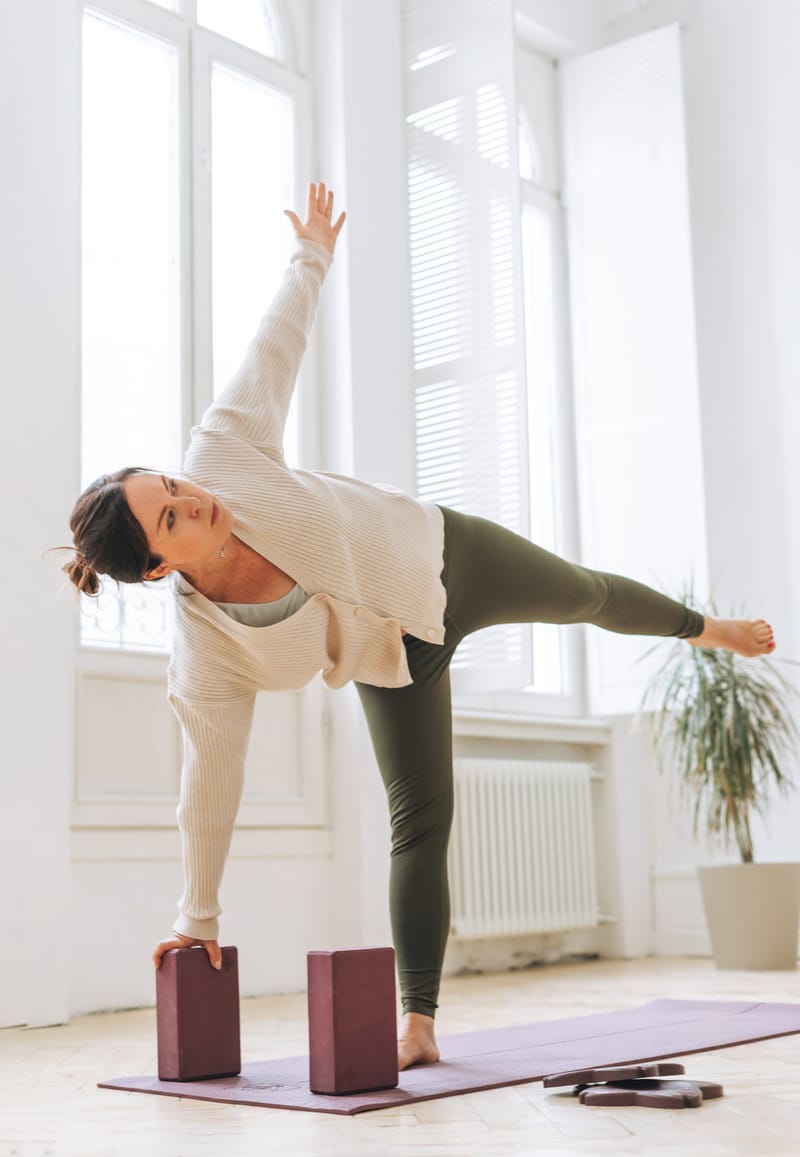Viniyoga

Viniyoga comes from Hatha-yoga, the classical yoga most widely practiced in the West, which is seen as a series of exercises designed to make the body more supple and relax the mind.
However, the meaning of the word yoga originates in its etymology -yuj- translated as ‘to unite’.
Hatha yoga is made up of postures that encourage meditation and effort, with the aim of linking body and mind while strengthening them together.
Viniyoga comes from the word ‘vi’ meaning ‘to make appropriate choices’ and ‘ni’ meaning ‘within’.
It has its origins in aphorism 6 of chapter III of Patanjali's Yoga Sutra: ‘Tasya Bhumishu viniyoga’ meaning ‘the application of this is done in stages according to levels’.
Initially, this principle was applied only to meditation.
And Sri T. Krishnamacharya developed this idea by also applying it to the practice of postures (āsanas) and breathing (prānāyāma).
So Viniyoga is not a school, nor an organisation, nor a style of yoga. It is a direction for yoga to bear its full fruit. And this direction is given during the practice, with a certain intention that of adapting according to each person's particularities.
There are 6 pillars to the teaching of Viniyoga:
-Personalisation of practice: in the case of group classes, this takes place through careful observation of the student by the teacher and of the student by the teacher. The postures and their duration are adapted. Students learn to control their efforts. When the body is unable to perform a posture or its variants, they are then practiced mentally, as visualisation has an effect.
-Bhavanna: This is the focus of the session. It can be supported in various ways, such as the breath, anchoring, a sensation in a part of the body, or a rule of behaviour towards oneself or others (Yama or Niyama), for example, Asteya - honesty or Santosha - contentment. It is very interesting to experience the same posture under the axis of different bhavanas.
-Progression and balance during the practice: the postures progress gradually from dynamic to static, at which point the breath is used to go further, with a balance between symmetrical and asymmetrical postures and counter-postures to maintain balance and keep the body on its axis.
-Rhythmic, conscious breathing: Awareness of breathing becomes the link between body and mind. Breathing relaxes the body, the nervous system and, ultimately, the mind. Inhale as you open, exhale as you close. Sometimes this principle is alternated, in order to experience a different effect and perspective. Different breathing techniques are suggested depending on the effect you are looking for.
-Stability and well-being: These two simultaneous qualities are mentioned in aphorism 46 of chapter II of Patanjali's Yoga Sutra: ‘Sthira sukham âsanam’ (the posture should be firm and comfortable).
Sthira means firmness and stability. Sukha means well-being, gentleness and letting go.
These two qualities are inseparable, creating an alchemy of openness through listening to bodily sensations.
-Intense practice and inner detachment: The framework of all yoga practice is described in aphorism 12 of chapter I of Patanjali: ‘Abhyâsa vairâgyâbhyâm tan nirodha’ (conditioned mental activity is brought to a halt by intense practice and inner detachment). Persistence, whether in an activity or a decision, over a long period of time, with care and involvement.
However, detachment, the absence of passion in the process, is necessary to extract ourselves from the need for control and the abandonment of the fruits of our actions.
Here's how a session works, but the best thing is to try it out!
Classes are held on Mondays and Thursdays at 7.30pm at the Center paramédical de Casteau.
Information: 0485/891548


